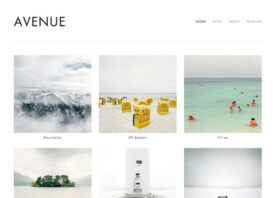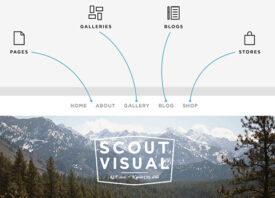Search this site
Stop Wasting Time Culling Your Photos, Use This Tool Instead (Sponsored)

A few years ago, the results of a wedding photography survey* grabbed headlines: according to that survey, photographers spent, on average, just 4% of their time actually taking pictures. The majority of their time was consumed with other tasks, including photo editing, business and admin duties… and culling. While that finding might have been surprising to some, it did shed light on just how many hours photographers are spending at their desks—and how invaluable it could be to streamline that workflow.
In 2022, photographers wear more hats than ever before, juggling clients, deadlines, and marketing for their businesses. But they also have more tools at their disposal, from AI-powered retouching apps to client management software. Now, there’s FilterPixel, an application that’s saving photographers tedious hours of work behind the computer—and rapidly drawing the endorsements of hundreds of industry insiders.

Introducing FilterPixel
Here’s how it works: you import your photos into FilterPixel and select the genre of your shoot (wedding/event, portraits, and beyond) to help the AI analyze your photos. Your photos will automatically be sorted into categories: accepted, rejected, and untagged.
The AI will accept or reject pictures based on common mistakes or unwanted elements (blurry, out-of-focus subjects, closed eyes, etc.). “Untagged” photos are similar to “maybes,” giving the photographer the choice to accept or reject. All of this is done in moments—literally (massive batches, of course, take a bit longer, but you can get through 1,000 to 3,000 images in just about 20 minutes). FilterPixel is cloud-based, hence the lightning-fast speed.
For photographers, that means no endless zooming, scrolling, and sorting. At any point, the photographer can change an acceptance into a rejection and vice versa. You can also rate your photos directly in FilterPixel using a star rating system or color tags so you have that information later when editing and retouching (no need to waste time rating the rejects). From there, you can export your selection right into the photo editing software of your choice.
In recent years, we’ve seen intelligent tools address a number of headaches for photographers, replacing outdated manual workflows with smarter alternatives. To start, we saw underexposed photos instantly brightened, red eyes eliminated, and unwanted objects removed. Today, there’s an AI tool out there for generating Instagram hashtags, and there’s even a website that generates stock “photos” of people using just AI (no camera needed). Needless to say, some of these gadgets have been more helpful than others.
What is a “photo culling software”?
The idea of “photo culling software” itself is relatively new, first emerging into the mainstream in around 2020, the same year FilterPixel launched. FilterPixel stands out not only because of its purpose (few tools are devoted specifically to culling) but also because of the AI that powers it. As you use FilterPixel, you’ll find it adapting to your desires, tastes, and needs. The more you use it, the better it’ll get at analyzing what kinds of photos you want to keep and what you don’t.
If, for example, you’re intentionally incorporating closed eyes or dreamy blur, it’ll adapt to that preference. (It’s worth noting that FilterPixel is pretty great at distinguishing between intentionally and unintentionally closed eyes, right off the bat.) And it improves quickly; even if you notice occasional mistakes in your first batch, that information will help the AI do better on the second.
For that reason, this is one tool that offers the best of both worlds: it saves you time, but it also gives you full control over the creative process. And that makes FilterPixel unique when compared to its competitors: with combined features like ratings, AI learning, and capabilities for different genres, from the mainstream to the niche, it allows for a highly personalized experience, with the photographer in the driver’s seat.

Another handy feature offered by FilterPixel is automatic grouping in Survey Mode: if you have a batch of similar shots, they’ll sort them together in one place so you can review, judge, and select the best of the bunch. Or you can have the AI do it for you, selecting what it perceives as the top shots. As always, you can make adjustments to FilterPixel’s selections as you go.
AI Filters
You can also use their automatic tags (and apply your own) to filter photos into galleries around a specific theme, such as “perfect focus” or “hugs” and “kisses.” FilterPixel is also able to detect technical details that you might miss, so it can be helpful to take advantage of their AI sliders, which sort photos by sharpness and quality. These sliders are perfect for quickly identifying which photos are (technically) better than the rest, without having to zoom in and out on every detail. Rest easy that you’ll deliver a variety of images to your clients without duplicates and without agonizing over which photo to choose; let the AI do it for you.
You can also use Comparison Mode to analyze similar images side-by-side, based on factors like Focus and Eye Quality.

Ease of use
Although FilterPixel has a multitude of features (and pairs perfectly with whatever photo editing software you already use), you might be surprised by its ease of use. A sleek and intuitive layout means there’s almost no learning curve, so you can start using it right away. And it offers a tailored approach to a number of different genres; beyond wedding/event and formal portraits, they also have specific parameters for selecting family/group portraits and newborn photography sessions.
Led by Aayush Arora and Pratyush Goel, the FilterPixel team has extensive knowledge of machine learning, and they’re constantly channeling that knowledge to help photographers solve workflow frustrations. Their customer service is second-to-none; if you have a question, they’ll hop on a Zoom call to walk you through it. Feedback is not only welcomed but encouraged.


FilterPixel Assist
One of the most promising innovations to come out of FilterPixel’s ongoing conversations with photographers is FilterPixel Assist, which offers an even more personalized approach to culling. Designed for photographers working in all genres and niches, including wildlife, cityscape, and architecture, FilterPixel Assist is an AI-powered assistant; you upload previously culled galleries from your archive, including selected and unselected images, and it’ll adapt to your culling style. The more photos you upload, the better.
After “training,” the AI essentially functions as you would, selecting the images that fall in line with your previous choices and rejecting the ones that aren’t up to par. Oh, and it only takes 24 to 72 hours to learn before it’s ready to start culling. Assist is free for FilterPixel users, and it’s currently available in beta.


FilterPixel Pricing
Finally, perhaps we’ve buried the lede here, but FilterPixel is surprisingly affordable given its available tools. To start, they offer your first 10,000 images free and a 14-day free trial. There’s also a free version that offers basic features, including manual culling and instant export for unlimited photos. It costs just $9.99 per month for a Standard plan and $11.99 for a Pro plan with all the bells and whistles.
For the chance to add an extra few hours to your workweek—which could be spent on new projects and reaching out to new clients—it’s a steal. If you want to give yourself the gift of time (and impress your clients by beating all your deadlines), check it out. As a bonus, FilterPixel is offering Feature Shoot readers 20% on all plans; use the code “FS20” to apply it at checkout.

*See The Fourth Annual Wedding Photography Survey by Your Perfect Wedding Photographer, 2019-2020, for reference.




